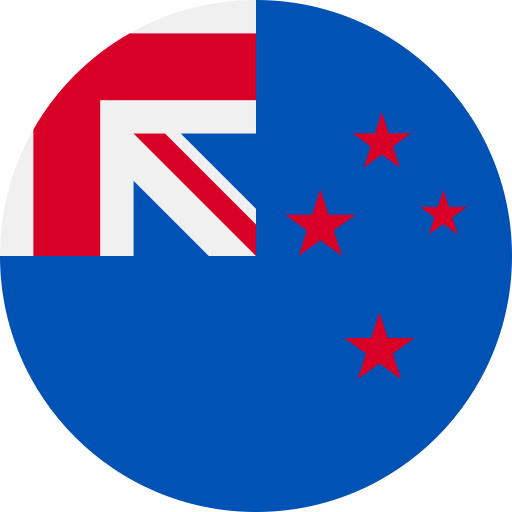Key Takeaways
- Pronunciation Variations: New Zealand English features flattened vowel sounds, while Australian English maintains clearer vowel pronunciation, leading to notable differences in words like “fish.”
- Distinct Vocabulary: Unique terms such as “jandals” in New Zealand and “thongs” in Australia highlight the cultural nuances and regional preferences in both dialects.
- Slang Differences: Kiwis use phrases like “sweet as,” whereas Australians may say “no worries,” showcasing the playful nature of each dialect’s slang.
- Grammar and Syntax Variations: Sentence structure and tense usage differ between the two dialects, with Kiwis often favoring informal constructions and present perfect tenses.
- Cultural Influences on Language: Indigenous languages and popular culture significantly shape both New Zealand and Australian English, enriching vocabulary with unique references from local heritage.
Ever wondered why New Zealand and Australian English sound so different? While both share roots in British English, subtle differences can leave even the most seasoned travelers scratching their heads. From unique slang to pronunciation quirks, understanding these variations not only enriches your travels but also deepens your appreciation for each culture.
Overview of New Zealand and Australian English
New Zealand and Australian English share British roots but differ significantly in various aspects. You’ll notice variations in pronunciation, vocabulary, and slang that reflect each country’s unique culture.
Pronunciation Differences
Pronunciation marks a prominent distinction between the two. In New Zealand English, vowels may sound more flattened or centralized compared to their Australian counterparts. For instance, the “i” in “fish” may resemble “fush,” while Australians might pronounce it more distinctly as intended.
Vocabulary Variations
Vocabulary also varies significantly. While both regions use some terms interchangeably, certain words are unique to each country. For example:
- New Zealand: “jandals” for flip-flops
- Australia: “thongs” for the same item
- New Zealand: “bach” for a holiday home
- Australia: “shack”
These distinctions highlight how language evolves based on cultural influences and local customs.
Slang Usage
Slang represents another area where these dialects diverge. Kiwis often employ phrases like “sweet as” to express approval or agreement, whereas Australians might say “no worries.” This differing slang showcases the playful nature of both dialects and adds flavor to everyday conversations.
Understanding these differences enhances your communication experience when engaging with locals from either region. Recognizing specific terms and pronunciations can foster deeper connections during travels or business interactions.
By appreciating the nuances of New Zealand and Australian English, you enrich your understanding of both cultures while avoiding potential misunderstandings along the way.
Phonetic Differences
New Zealand and Australian English exhibit distinct phonetic characteristics that set them apart. Understanding these differences enhances communication, especially for those engaging with the local culture.
Vowel Sounds
Vowel sounds in New Zealand English often appear more centralized or flattened compared to their Australian counterparts. For instance, words like “fish” may sound closer to “fush” in Kiwi pronunciation. In contrast, Australians might pronounce the same word with a clearer vowel sound. The diphthongs also differ; Kiwis often merge certain sounds, making “face” sound more like “fess.” These subtle shifts can lead to misunderstandings if you’re not familiar with the nuances.
Consonant Differences
Consonants further distinguish New Zealand from Australian accents. For example, Kiwis typically soften their consonants at the end of words. The “t” in “butter” might become a soft “d,” sounding like “budder.” Australians tend to maintain a stronger enunciation of consonants, preserving clarity even at the end of phrases. This variation can affect how easily you pick up on conversations and slang within each country’s unique context.
Understanding these phonetic differences enriches your interactions and helps you connect better with locals during your travels or business exchanges.
Vocabulary Variations
New Zealand and Australian English display notable vocabulary differences, reflecting their unique cultures and environments.
Unique Terms in New Zealand English
Kiwis use distinct terms that might surprise those unfamiliar with their vernacular. For example, “jandals” refer to what many call flip-flops in other parts of the world. Another common term is “bach,” which denotes a holiday home or beach house. You might also hear “tramping,” meaning hiking, highlighting the country’s stunning landscapes. Additionally, phrases like “sweet as” express approval or satisfaction without needing further explanation.
Unique Terms in Australian English
Australians have their own set of unique vocabulary that can be puzzling for outsiders. The word “thongs” serves as their equivalent of flip-flops, showcasing regional terminology that varies widely from New Zealand’s choices. Australians often refer to a casual gathering as a “barbie,” short for barbecue, while “arvo” means afternoon. Moreover, you’ll encounter expressions like “fair dinkum,” signifying authenticity or truthfulness in conversation.
Understanding these variations enriches your interactions when traveling or communicating with locals from either country.
Grammar and Syntax
New Zealand English and Australian English display distinct grammar and syntax characteristics. Understanding these differences can enhance your communication when interacting with locals.
Sentence Structure
Sentence structure varies between New Zealand and Australia, often reflecting cultural nuances. Kiwis may use more informal constructions, favoring shorter sentences in casual conversation. For instance, a New Zealander might say, “I’m keen for that,” while an Australian could express the same sentiment with “I’m interested in that.” These variations can affect clarity during exchanges; being aware of them helps prevent misunderstandings.
Use of Tenses
Tense usage also differs slightly between the two dialects. In New Zealand, you might encounter a preference for the present perfect tense in certain contexts—like saying “I’ve just finished” instead of “I just finished.” Australians typically stick to simpler past forms. Recognizing these subtle shifts in tense not only aids comprehension but also enhances your interactions with speakers from either region.
Cultural Influences on Language
Cultural influences play a significant role in shaping the English spoken in New Zealand and Australia. These influences stem from historical contexts, indigenous languages, and popular culture.
Indigenous Language Impact
Indigenous languages significantly influence both New Zealand and Australian English. In New Zealand, Māori language integrates into everyday speech, with words like “kia ora” for greeting or “whānau” meaning family. These terms reflect cultural respect and recognition of Māori heritage. In contrast, Australian English incorporates various Aboriginal words, such as “kangaroo” and “bush,” enriching its vocabulary with unique cultural references. Understanding these influences fosters deeper connections with local communities.
Popular Culture References
Popular culture also impacts the language used in both countries. Television shows, films, and music often introduce new slang or expressions that become part of the vernacular. For example, iconic Australian shows like “Home and Away” shape how Australians express themselves in casual conversations. Similarly, New Zealand’s film industry has brought phrases like “choice” into common usage among Kiwis to express approval or excitement. Recognizing these references can enhance interactions while traveling or engaging with locals.
Understanding these cultural nuances not only enriches communication but also deepens your appreciation for the vibrant cultures found in New Zealand and Australia.
Conclusion
Understanding the differences between New Zealand and Australian English can significantly enhance your interactions in both countries. These unique dialects not only reflect cultural nuances but also create opportunities for richer connections with locals.
By recognizing variations in pronunciation vocabulary and grammar you’ll navigate conversations more smoothly and avoid potential misunderstandings. The colorful slang terms used by Kiwis and Australians add an extra layer of charm to your experience whether you’re traveling or engaging in business.
Embracing these linguistic distinctions allows you to appreciate the diversity within the shared English language. So next time you find yourself down under or across the ditch take a moment to enjoy the subtleties that make each dialect special.
Frequently Asked Questions
What are the main differences between New Zealand and Australian English?
Both dialects share British roots but differ in slang, pronunciation, and vocabulary. For example, Kiwis often use “jandals” for flip-flops, while Australians say “thongs.” Pronunciation also varies; Kiwis may pronounce “fish” as “fush,” whereas Australians articulate it more clearly.
How does pronunciation differ between the two dialects?
New Zealand English typically features flattened vowels and softer consonants. Words like “butter” might sound like “budder” in Kiwi speech. In contrast, Australians maintain a stronger enunciation with clearer vowel sounds.
What are some unique slang terms used in New Zealand and Australia?
Kiwis commonly use phrases like “sweet as” to express approval, while Australians might say “no worries.” These expressions reflect cultural attitudes and enhance local communication when traveling or interacting.
How do grammar and syntax vary between New Zealanders and Australians?
Kiwis tend to favor informal constructions with shorter sentences. For instance, they might say “I’m keen for that,” while Australians would typically say, “I’m interested in that.” Understanding these nuances can prevent misunderstandings.
Why is it important to recognize these linguistic differences when traveling?
Recognizing the distinct characteristics of each dialect enhances communication with locals and fosters a greater appreciation for their cultures. It helps avoid misunderstandings during interactions, enriching your travel experience significantly.
What cultural influences shape the English spoken in both countries?
Indigenous languages play a significant role; Māori terms enhance New Zealand’s vocabulary while Aboriginal words enrich Australian English. Additionally, popular culture introduces new slang from TV shows and films unique to each country.







